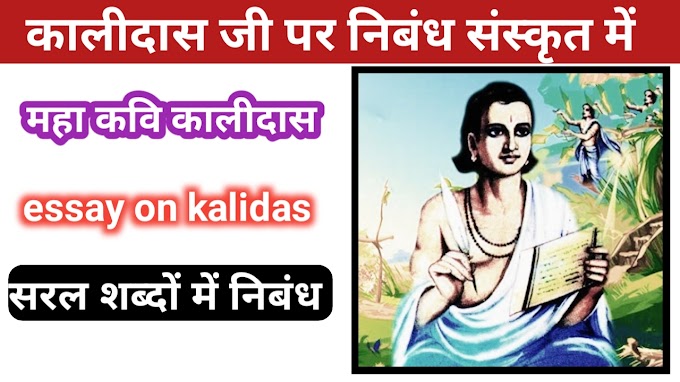CENTRAL IDEA OF A Tiger in the Zoo // सेन्ट्रल आइडिया आफ अ टाइगर इन दा जू
A tiger in the zoo central idia
नमस्कार दोस्तों स्वागत है आपका हमारी वेब साइट subhansh classes.com पर यदि आप गूगल पर A Tiger in the Zoo central idia सर्च कर रहे हैं तो आप बिलकुल सही जगह पर आ गए हैं हम आपको इस poem का सेंट्रल idia हिंदी और अंग्रेजी दोनों में बताएंगे, इसलिए आप पोस्ट को पूरा जरूर पढ़ें यदि आपको पोस्ट पसन्द आए तो अपने दोस्तो को भी शेयर करें यदि आप कुछ पूछना चाहते हैं तो आप हमारे youtube chennal Subhansh classes पर कॉमेंट करके ज़रूर पूछ लीजिएगा
03) A Tiger in the Zoo (Leslie Norris)
परीक्षा में Poetry भाग की किन्हीं भी दो Poems के नाम दिए जाते हैं, जिनमें से किसी एक Poem का Central Idea लिखना होता है। इसके लिए 4 अंक निर्धारित हैं।
A tiger in the zoo
In this poem, 'A Tiger in the Zoo' the poet tries to depict the poor condition of a caged tiger. He contrasts and compares the life of a caged tiger with a tiger living in natural habitat i.e. a jungle. Through the poem, the poet tries to convey that wild animals should be allowed to live freely in their natural habitat. Freedom is loved by all living beings and not just by human beings. The life of captivity breeds rage, intolerance and stress.
कविता, 'A Tiger in the Zoo' में कवि ने एक पिंजरे में बन्द बाघ की दरिद्र स्थिति का चित्रण करने का प्रयास किया है। वह पिंजरे में बन्द बाघ के जीवन की तुलना अपने प्राकृतिक परिवेश अर्थात् जंगल में रह रहे बाघ के जीवन से करता है। कविता के माध्यम से, कवि ने यह कहने का प्रयास किया है कि जंगली जानवरों को उनके प्राकृतिक परिवेश में स्वतन्त्र रुप से रहने की अनुमति देनी चाहिए। आजादी सभी जीवित प्राणियों को प्रिय है न कि केवल मनुष्यों को। अधीनता का जीवन क्रोध, असहिष्णुता तथा तनाव को जन्म देता है।
Q1. Notice the use of a word repeated in lines such as these .एक शब्द की पुनरावृत्ति पर ध्यान दीजिए जैसा कि इन पंक्तियों में है।
(i) On pads of velvet quiet, In his quiet rage. मखमल जैसे नर्म शान्त पंजों पर, उसके शान्त क्रोध में।
(ii) And stares with his brilliant eyes, At the brilliant stars.
और उसकी चमकदार आँखों से घूरता है, चमकदार सितारों को। What do you think is the effect of this repetition? आपके अनुसार इस पुनरावृत्ति का क्या प्रभाव है?
Ans. This repetition is a poetic device used by the poet in order to increase the intensity of the tiger's rage and his helpless silence. 'Velvet quiet' refers to the quiet velvet pads of the tiger, which cannot run. They can only walk around the limited space in the cage. The use of 'quiet rage' symbolises the anger and ferocity that is building up inside the tiger as it wants freedom, but the rage is quiet because he is locked in the cage and is helpless.
The repetition of 'quiet' has, thus, brought immense beauty to the poem. Similarly, the use of 'brilliant' for the tiger's eyes as well as the stars also brings out the magnificence of these lines. The tiger stares at the brilliant stars with his brilliant eyes dreaming about how beautiful his life could have been in the forest.
The repetition thus, gives a wonderful effect to the poem.
Q2. Read the following two poems one about a tiger and the other about a panther. Then discuss: Are zoos necessary for the protection or conservation of some species of animals? Are they useful for educating the public? Are there alternatives to zoos?
निम्न दो कविताओं जो एक बाघ के बारे में है एवं दूसरी तेन्दुए के बारे में है को पढ़िए। फिर चर्चा कीजिए: क्या जानवरों को कुछ प्रजातियों की रक्षा एवं संरक्षण के लिए चिड़ियाघर आवश्यक है? क्या वे (चिड़ियाघर) लोगों को शिक्षा देने में उपयोगी हैं? क्या चिड़ियाघरों का कोई विकल्प है?
The Tiger
The tiger behind the bars of his cage growls,
The tiger behind the bars of his cage snarls, The tiger behind the bars of his cage roars,
Then he thinks.
It would be nice not to be behind bars all The time
Because they spoil my view
I wish I were wild, not on show.
But if I were wild, hunters might shoot me, But if I were wild, food might poison me,
But if I were wild, water might drown me.
Then he stops thinking
And...
The tiger behind the bars of his cage growls, The tiger behind the bars of his cage snarls, The tiger behind the bars of his cage roars.
Peter Niblett
The Panther
His vision, from the constantly passing bars, has grown so weary that it cannot hold a thousand bars and behind the bars, no world.
anything else. It seems to him there are As he paces in cramped circles, over and over, the movement of his powerful soft strides is like a ritual dance around a centre in which a mighty will stands paralysed. Only at times, the curtain of the pupils lifts, quietly. An image enters in, rushes down through the tensed, arrested muscles, plunges into the heart and is gone.
Rainer Maria Rilke
Ans. Several species of wildlife are on the verge of extinction. There is a need to protect and conserve these species which include tigers, lions, etc. Many animals are hunted and poached while they are in the forest. Zoos are artificial habitats that can also develop into good scientific research centres. However, zoos are not the perfect substitute for forests since animals are confined in small cages. As a result their freedom to move around is restricted.
Yes, there are human alternative to zoos which are wildlife sanctuaries, national parks or bio-reserves where animals live in an open but protected environment. They are able to roam around freely yet, they are protected here from hunters and poachers.
[EXTRACT BASED QUESTIONS]
परीक्षा में पाठ्य पुस्तक से किसी भी Poem का एक अंश (Stanza) दिया जाता है तथा उस पर आधारित 2 प्रश्नों के उत्तर देने होते हैं। यहाँ पर
Stanza के साथ 2 से अधिक Questions दिए गए हैं, जो केवल विद्यार्थियों के सम्पूर्ण अभ्यास के लिए है। परीक्षा में 2-2 अंकों के 2 ही प्रश्न पूछे जाएंगे। Read the stanzas given below and answer the questions that follows.
1.He stalks in his vivid stripes,
The few steps of his cage,
On pads of velvet quiet,
In his quiet rage.
Questions
(i) Who stalks in vivid stripes?
(ii) What are the two qualities of the animal under reference?
(iii) How are the pads of a tiger?
(iv) What mood is the tiger in?
(v) Why is the tiger in 'quiet rage'?
Answers
(i) The tiger stalks in vivid stripes.
(ii) The tiger has vivid stripes on his body and soft velvet pads. He looks majestic as he moves slowly and quietly in his cage.
(iii) The pads of a tiger are velvet (soft).
(iv) The tiger is in rage.
(v) The tiger is in quiet rage as he is locked and his freedom been curtailed. He feels helpless hence, he is agitated.
2.He should be lurking in shadow,
Sliding through long grass,
Near the water hole,
Where plump deer pass.
Questions
(i) Where is the tiger lurking?
(ii) Where is the long grass?
(iii) Who is going to be the tiger's prey?
(iv) Which habitat is described in this stanza?
(v) According to the poet, at which place should be the tiger?
Answers
(i) The tiger is lurking in the shadow.
(ii) The long grass is near the water hole.
(iii) A plump deer will be the tiger's prey..
(iv) The tiger's natural habitat i.e., the jungle is described in th stanza.
(v) According to the poet, the tiger should be in the jungle.
3.He should be snarling around houses At the jungle's edge,Baring his white fangs, his claws, Terrorising the village!
Questions
(i) Who does the tiger terrorise?
(ii) How does the tiger terrorise the village?
(iii)Where should the tiger be snarling?
(iv) What does the poet try to suggest through these lines?
(v) Who does 'he' refer to in the first line?
Answers
(i) The tiger terrorises the village.
(ii) The tiger scares villagers by growling at them and showing his sharp white teeth and claws.
(iii) The tiger should be snarling around the houses.
(iv) The poet is trying to suggest that the tiger should be allowed to live in his natural habitat.
(v) 'He' in first line refers to the tiger.
4.But he's locked in a concrete cell, His strength behind bars, Stalking the length of his cage, Ignoring visitors.
Questions
(i) Where has been the tiger locked?
(ii) What is the attitude of the tiger towards the visitors?
(iii) Is the tiger's strength useful?
(iv) Does the tiger like visitors? If not, Why?
(v) Which animal is described in the above stanza?
Answers
(i) The tiger has been locked in a concrete cell.
(ii) The tiger ignores the visitors who came to have a look at him.
(iii) The tiger's strength is of no use behind the bars.
(iv) The tiger ignores visitors and dislikes them because he considers them devoid of feelings as none of them tries to help him out of prison.
(v) The tiger is described in the given stanza.
5.He hears the last voice at night, The patrolling cars,And stares with his brilliant eyes At the brilliant stars.
Questions
(i) Who is 'he' in the first line? What does he hear?
(ii) Is the tiger at peace at night? Why/Why not?
(iii) Where does the tiger stare?
(iv) How are the tiger's eyes?
(v) What is the meaning of 'patrolling"?
Answers
(i) 'He' in the first line refers to the tiger. He hears the last voice at night.
(ii) No, the tiger is not at peace even at night as the hears the sound of patrolling cars.
(iii) Theq tiger stares at the brilliant stars.
(iv) The tiger has brilliant eyes.
(v) 'Patrolling' means to go around an area at regular times to check if its safe.
Also read
👉A tiger in the zoo central idea
👉class 10 English chapter 3 notes
👉class 10 English chapter 4 glimpses of india
👉class 10 English chapter 6 the Sermon at Benares







